We love questions!
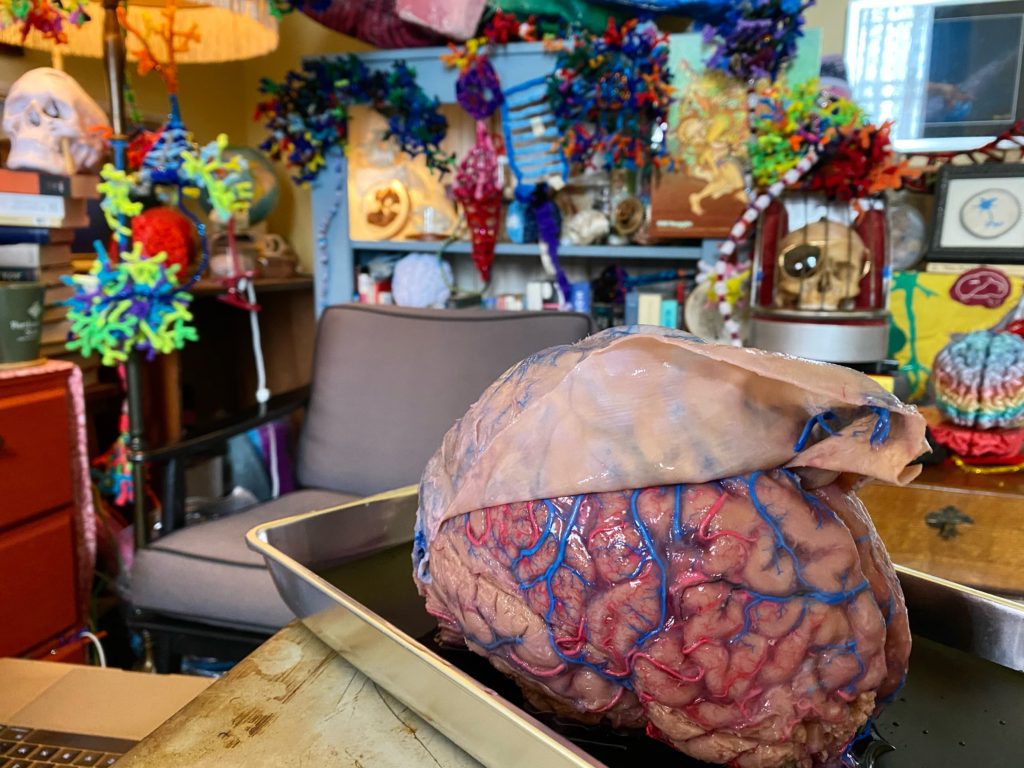
Some of the BEST questions come from students in public schools, who are fascinated by neuroscience research, and eager to share their own thoughts, interests, artwork and ideas about our brains!
Wait a minute: just how did that crayon get in?!
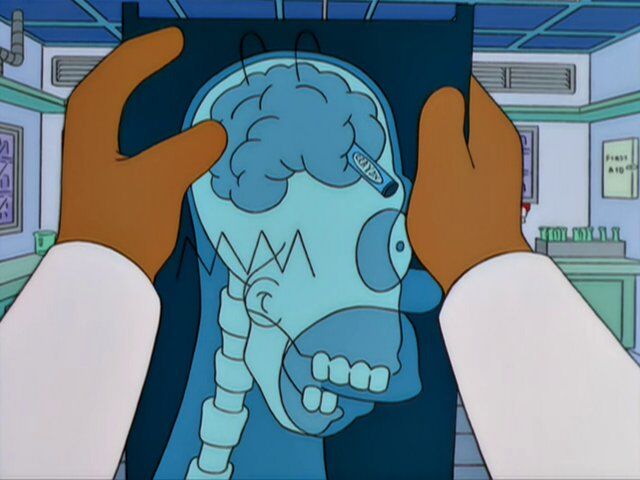
LEARN MORE: HOMЯ episode, The Simpsons
LEARN MORE: Franklin and Phineas Gage
Pandemic connections
In pandemic times, we’re thrilled to discover that online tools let our volunteers continue outreach, although we’re struck by the glaring inequities regarding public access to reliable broadband.

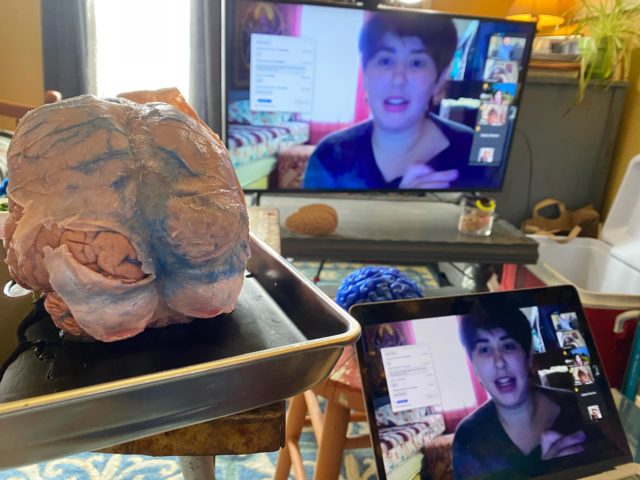
LEARN MORE: Determinants of broadband access and affordability
LEARN MORE: Barriers to distance learning during the COVID-19 outbreak
LEARN MORE: Broadband Access as a Public Health Issue
LEARN MORE: The Digital Divide Is a Human Rights Issue
LEARN MORE: Democratic-led Congress gets serious about universal broadband funding
It is possible to connect with others, share our stories and found object brain cells, and learn from deep and delightful conversations – but the essential platforms for public engagement really ought to be accessible and free.
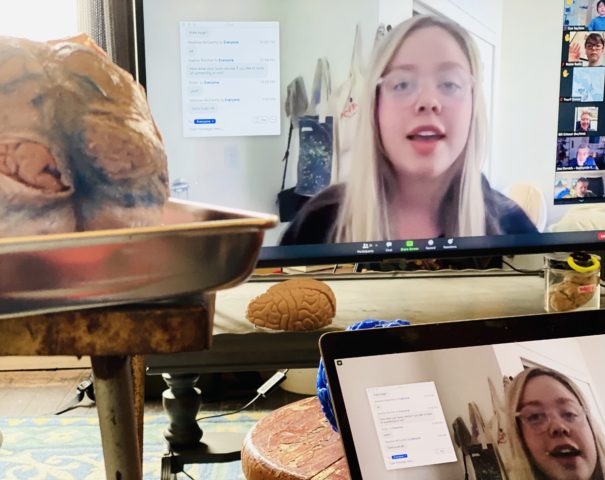
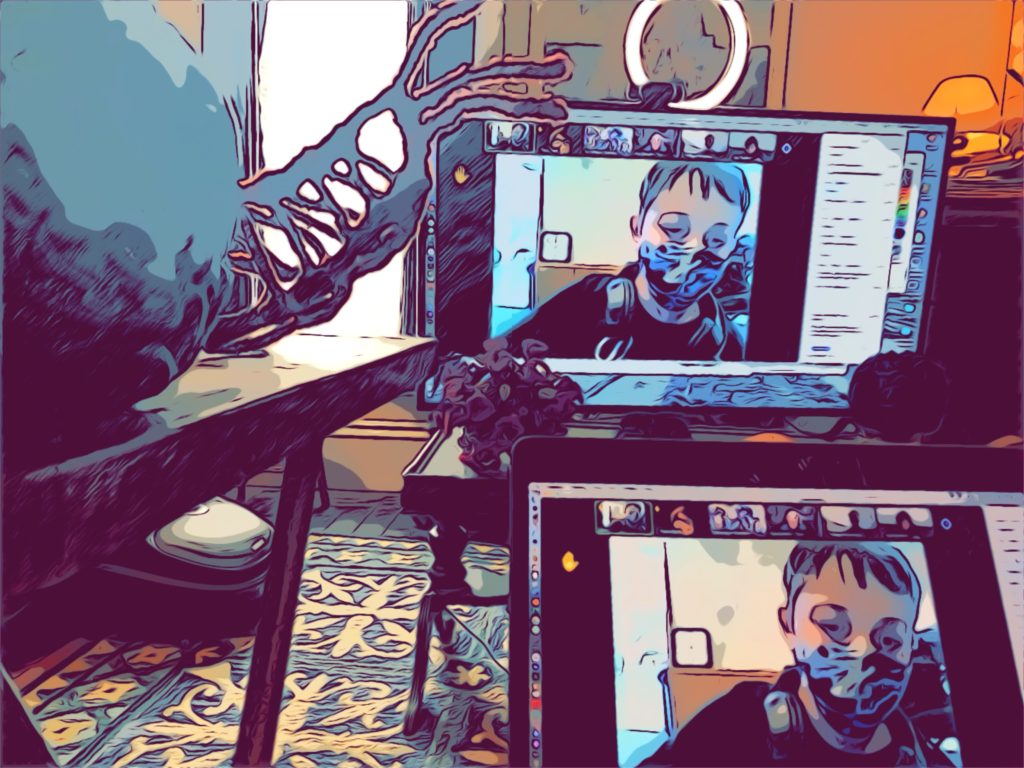
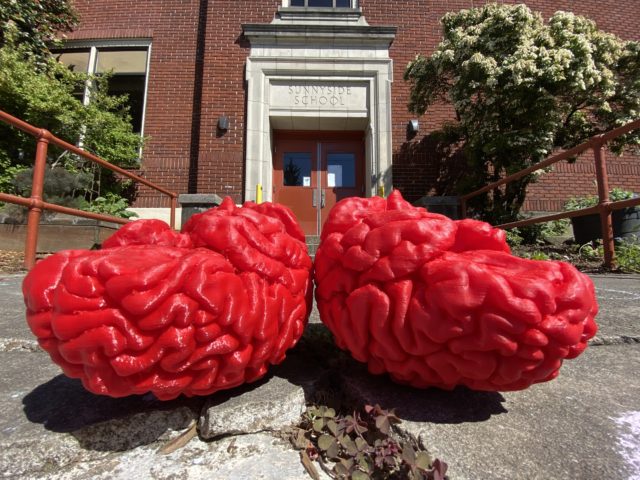
LEARN MORE: Pandemic connections
LEARN MORE: NogginFest 2021: Threshold Potential!
LEARN MORE: Action AND Potential!
Noggins in Portland Public Schools!
This month our NW Noggin volunteers are hopping online to meet with curious 4th grade students at Sunnyside Environmental School, a Portland Public School with a focus on “environmental education, environmental justice, culturally responsive teaching, place-based education and service learning.”
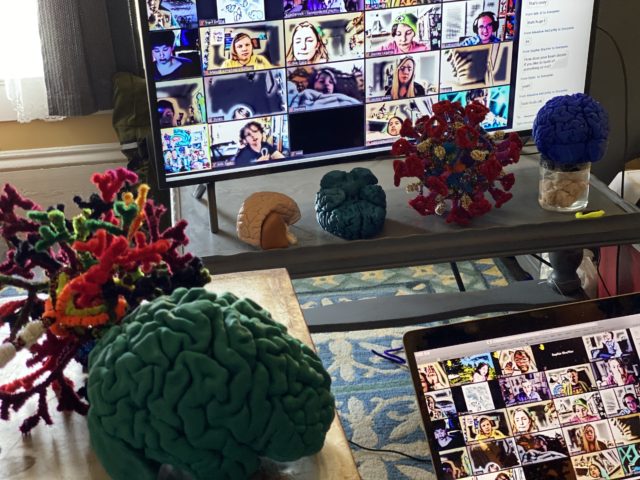

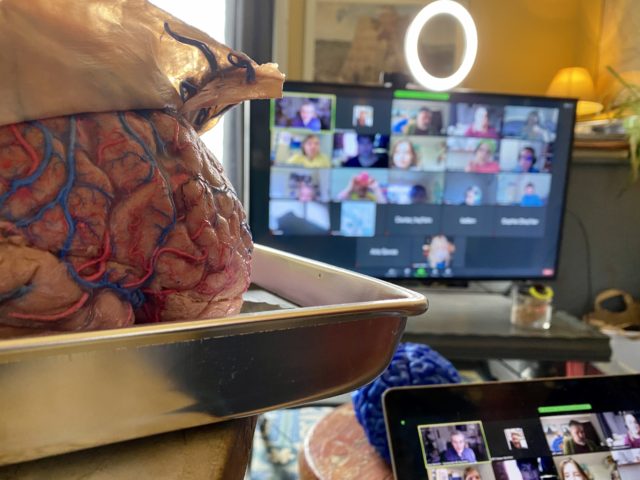
Noggin @ Sunnyside Thursday (4/22)
Noggin @ Sunnyside Friday (4/23)
Noggin @ Sunnyside Thursday (4/29)
Noggin @ Sunnyside Friday (4/30)
We visited Sunnyside classrooms LIVE in 2019, for an exciting afternoon of brain wrangling, art making and a little shocking electrophysiology!
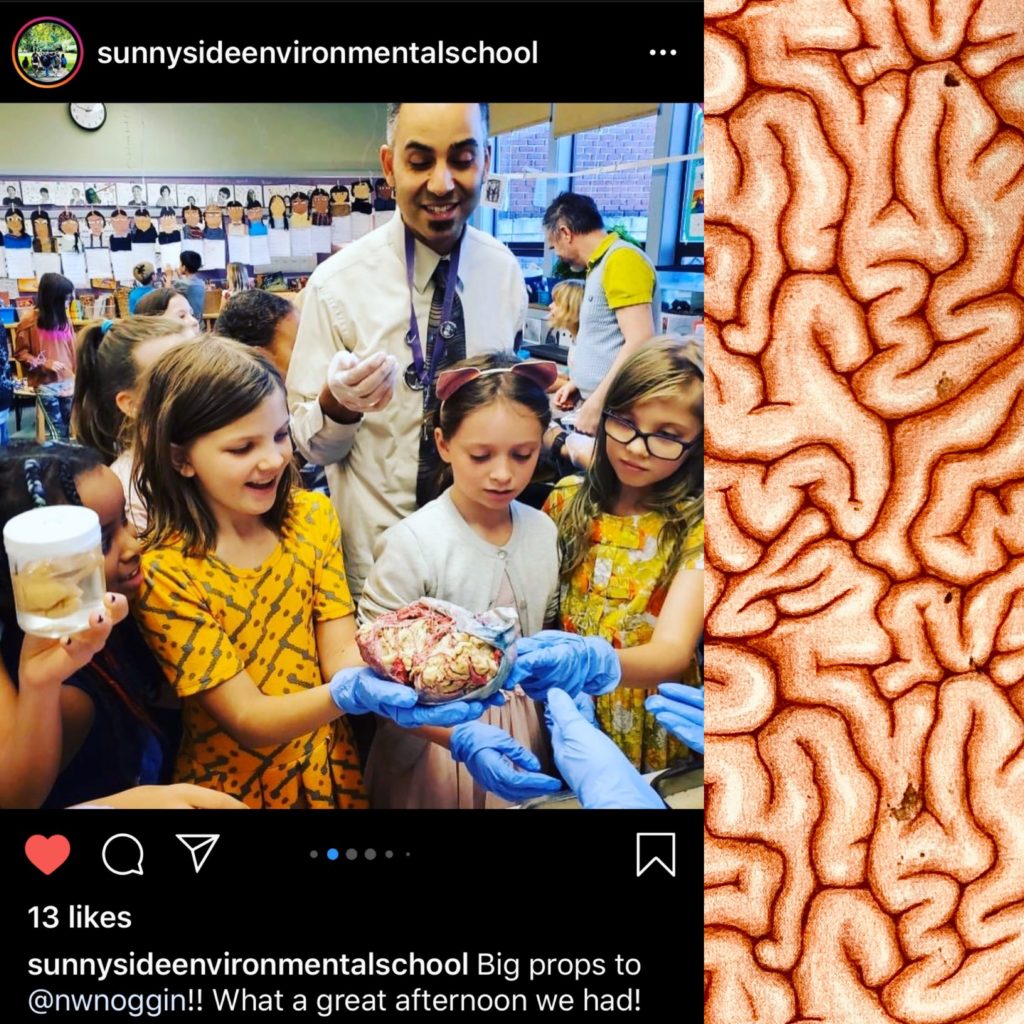
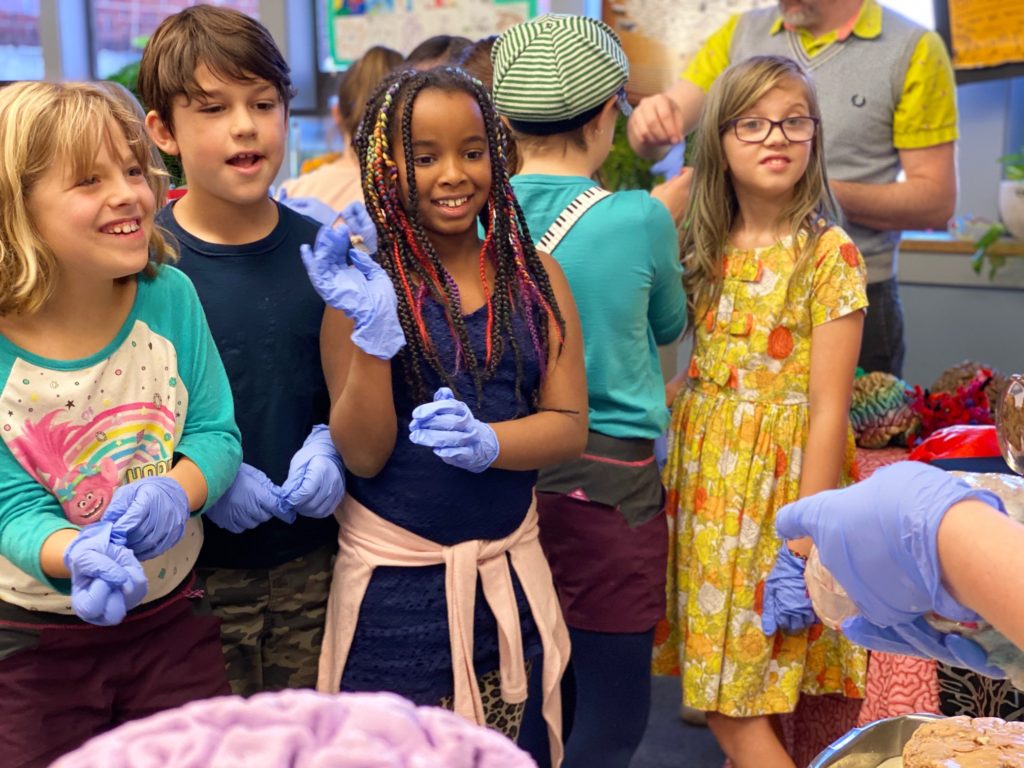
LEARN MORE: What about the glia?
In preparation for our four online visits this spring, we delivered two new life-size 3D printed human brains to teachers Jeremy Thomas and Asa Gervich!
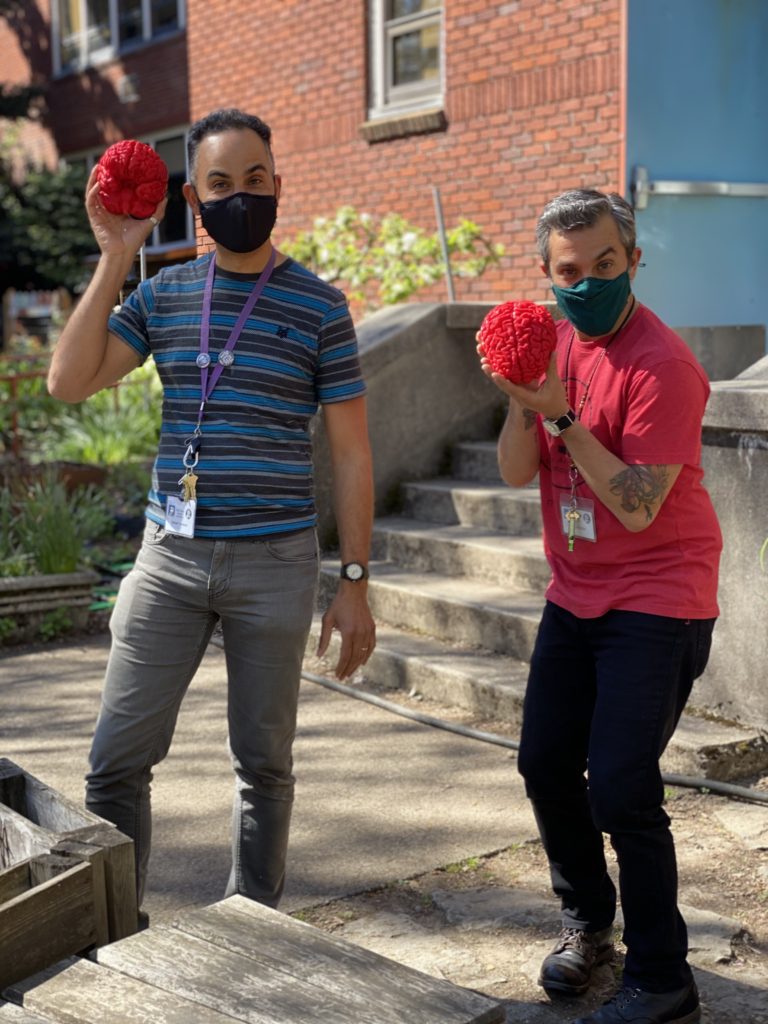
In two sessions this week we discussed these questions, and introduced ourselves.
Noggin volunteers include Andrea Rano and Jasmin Mabry, both NIH BUILD EXITO scholars from Portland State University, Magda Armendariz Sullivan, Kass Fitzgerald, Anna Traylor, Wilson Lubeck, William Leverette, Melissa DeMoura, Carli Cox, Danny Leister-Gray, Alex Heinrich and Roman Cimkovich, all Psychology and Neuroscience undergraduates from PSU, Jessica Cary, a recent PSU graduate, and Yuri Sugano, a neuroscience research scholar at the University of Chicago who joined us from Brazil!

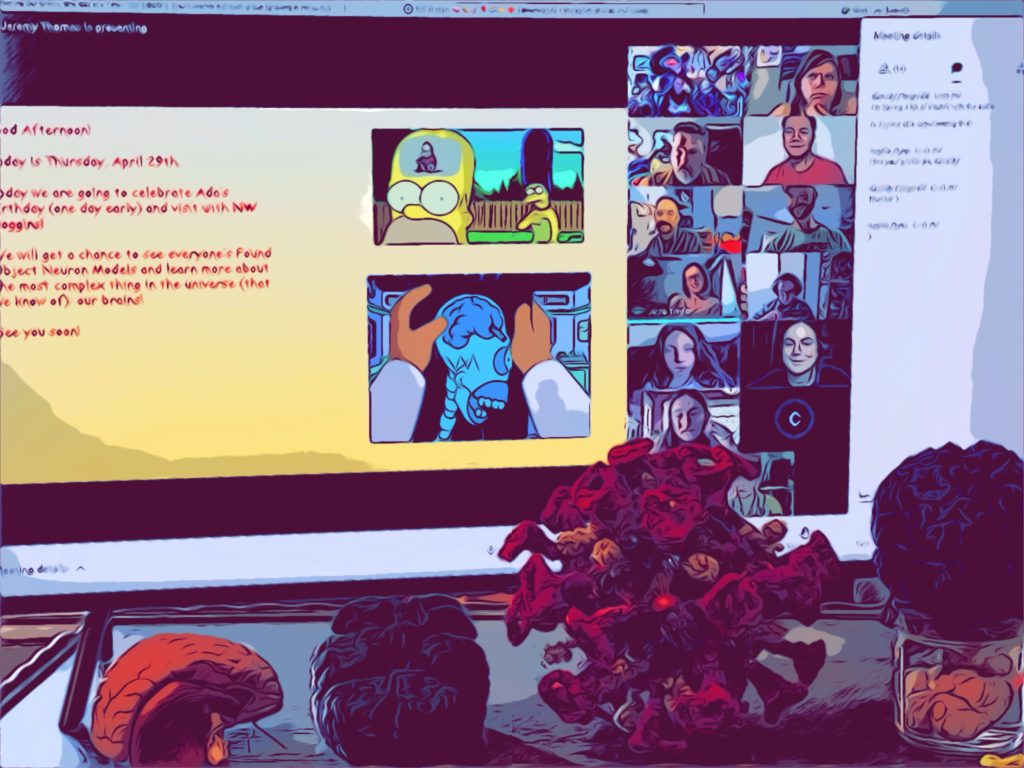
We discussed incredible, thought-provoking questions this week about epilepsy, sleep, dreams, adolescent brain development, nervous system/immune reactions, memory, taste preferences, traumatic brain injury, neuroanatomy – and what might just happen if a crayon (or other object) landed in your noggin!
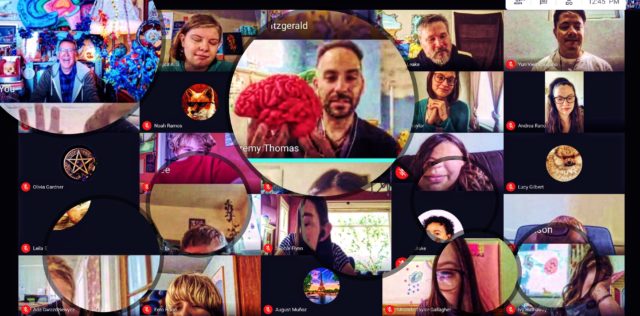
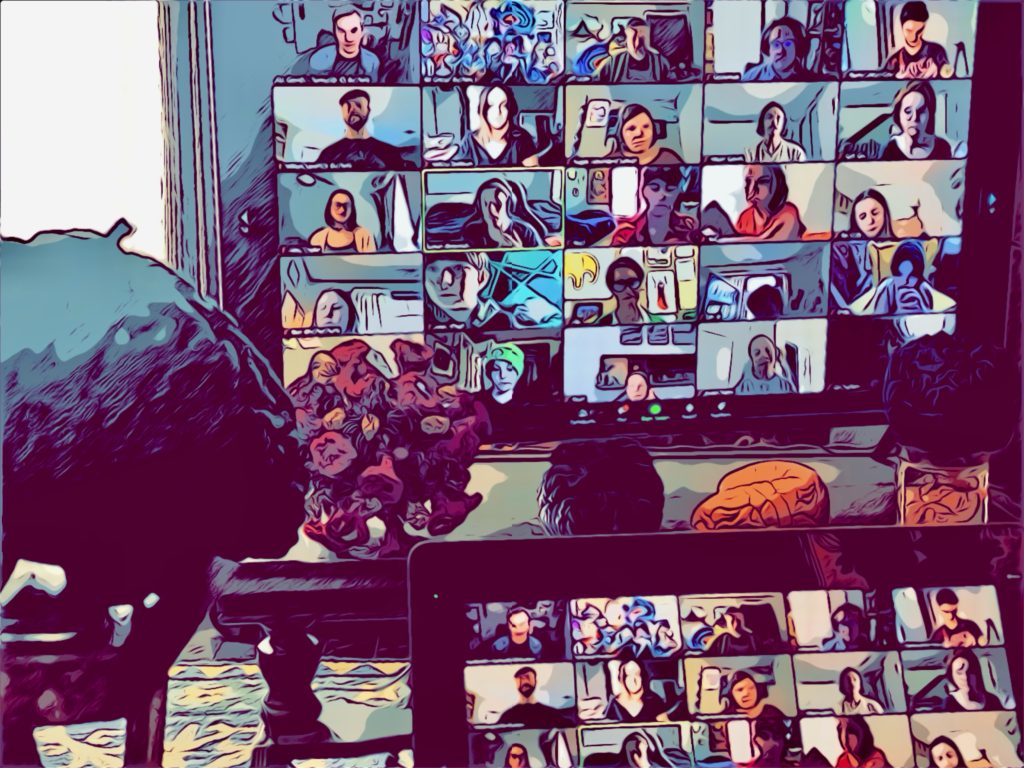
Found object brain cells!
Our Arts Coordinator, Jeff Leake, also introduced our found object brain cell project – and in both sessions, students were so inspired that they built some beautiful and elaborate neurons out of Legos and flowers!
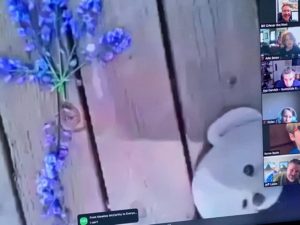


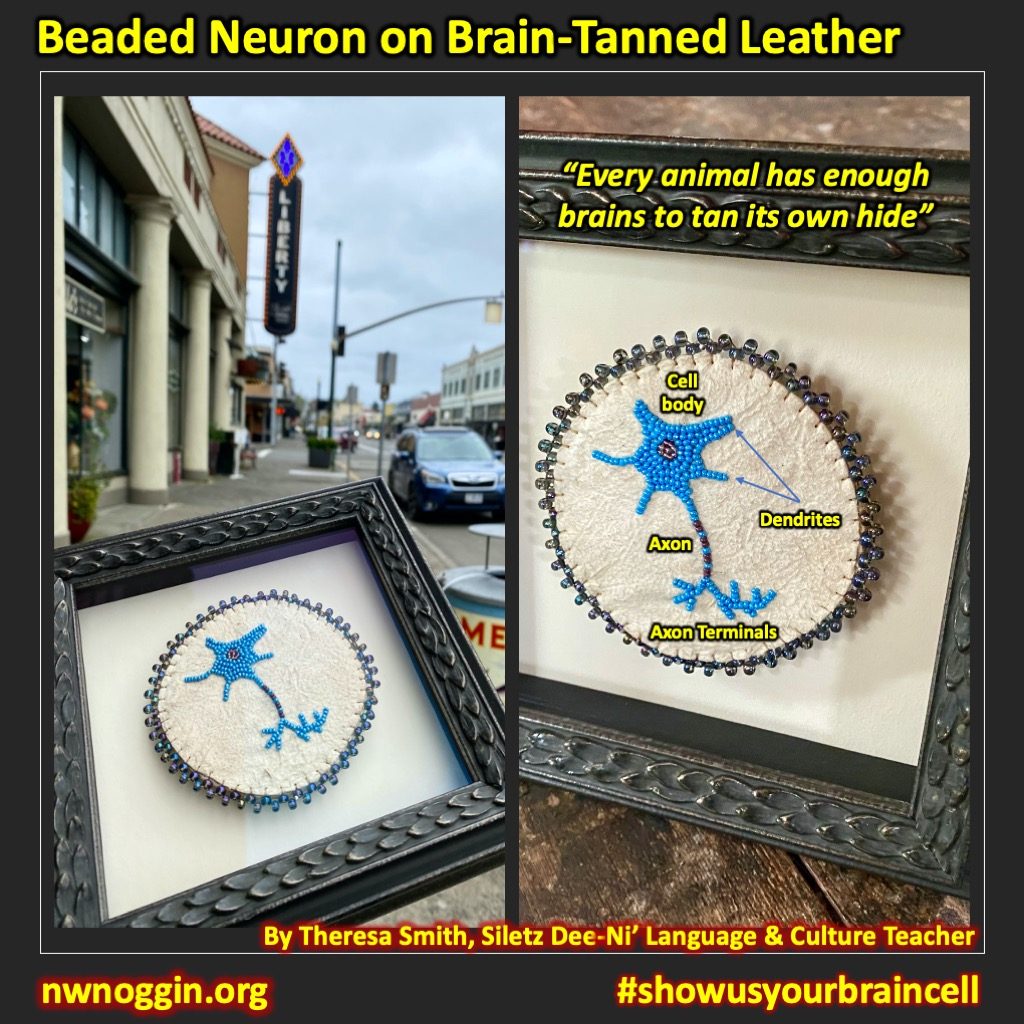
LEARN MORE: Found Object Brain Cell Project
LEARN MORE: Reconnecting our brains, one cell at a time
And check out the beautiful cells they showed us the following week!
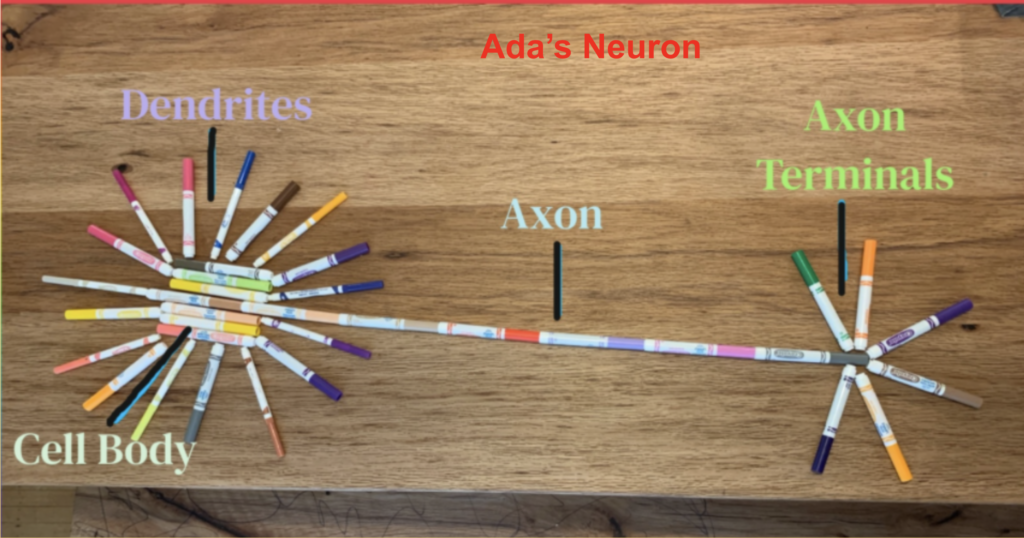
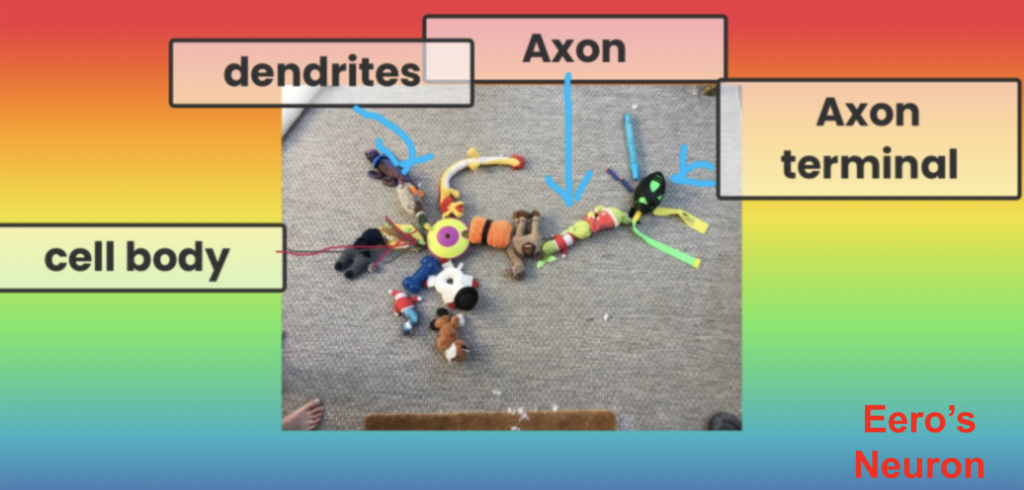
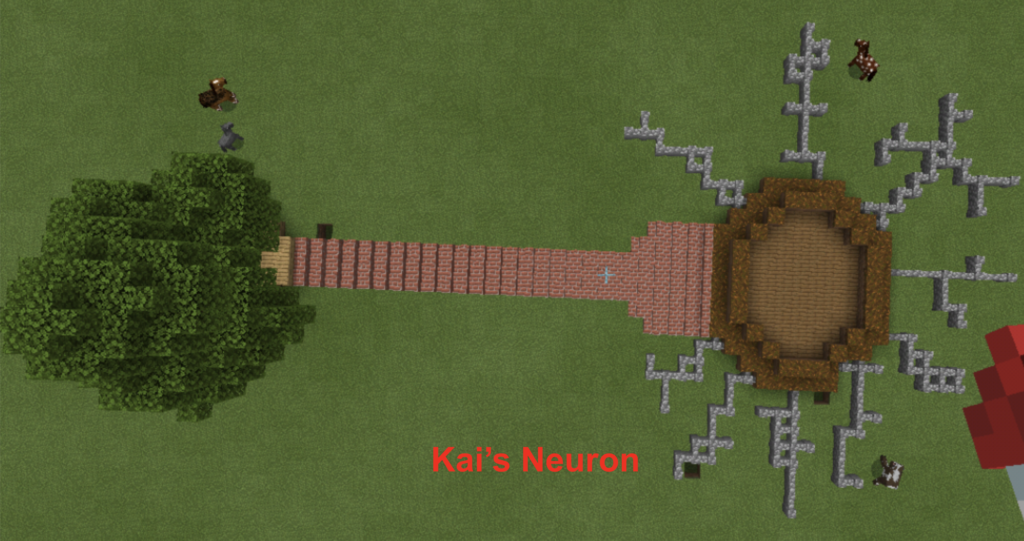
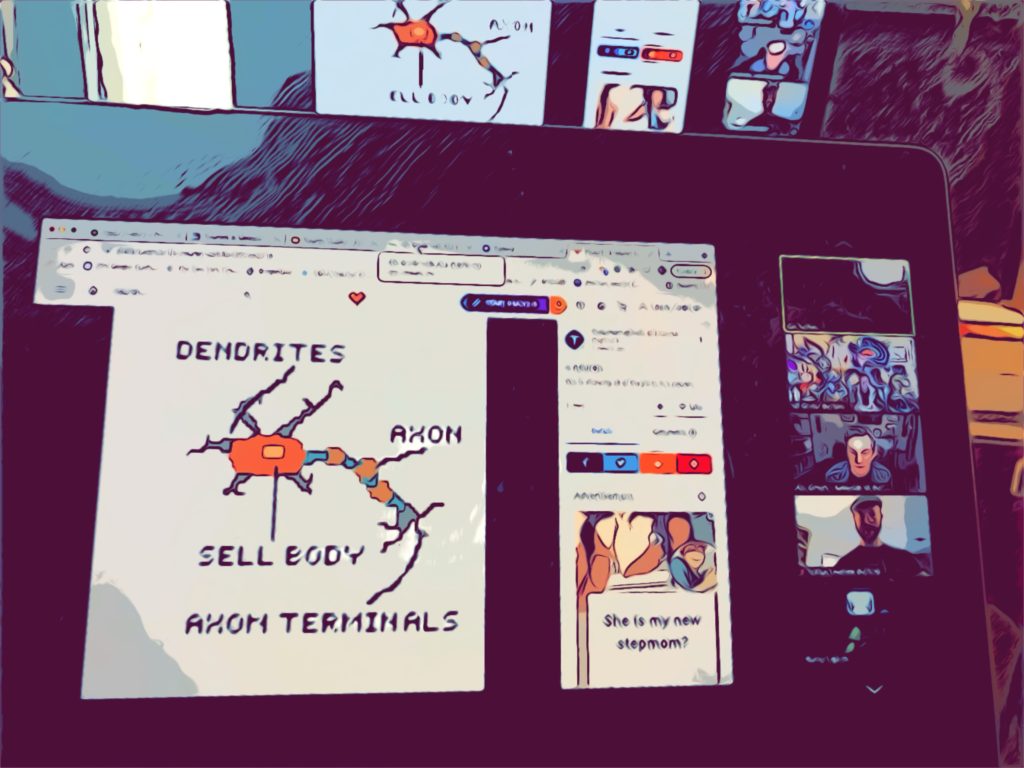
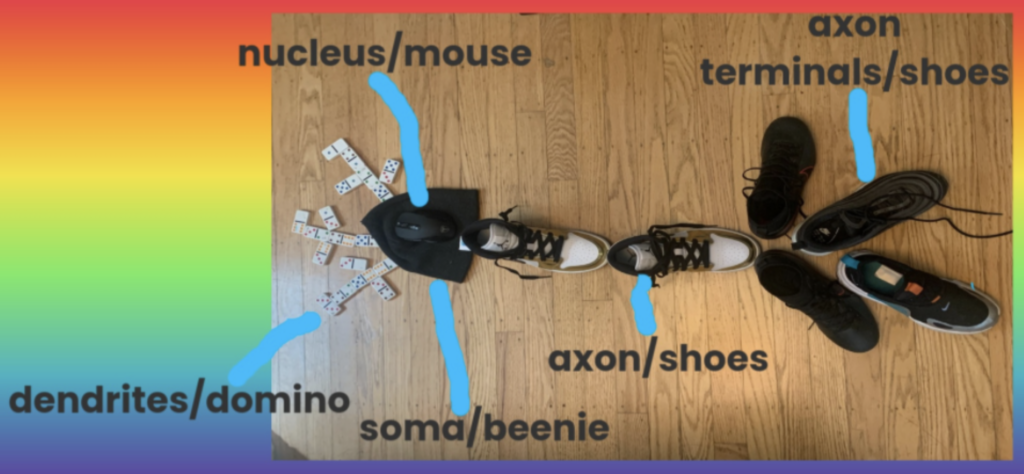
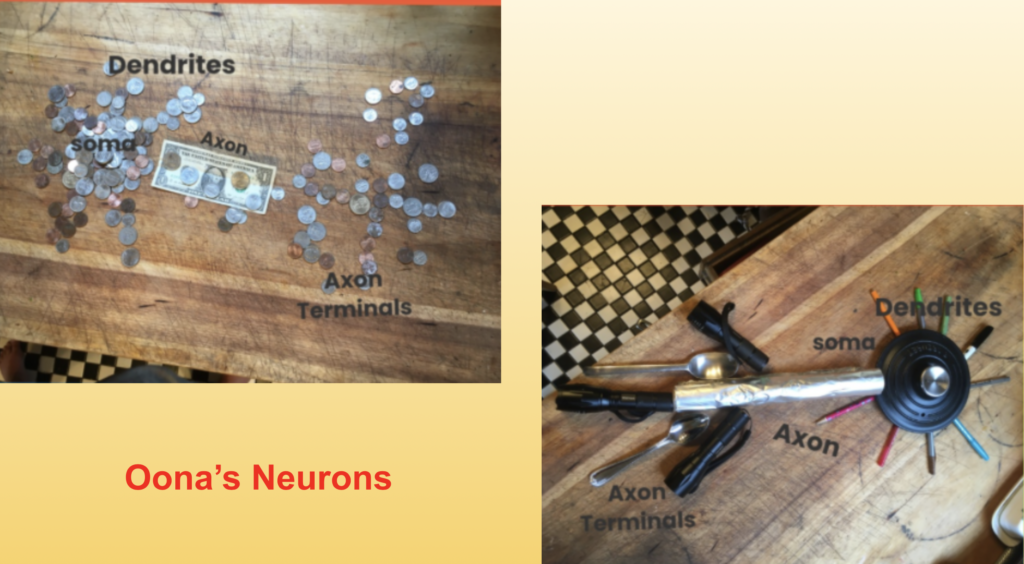
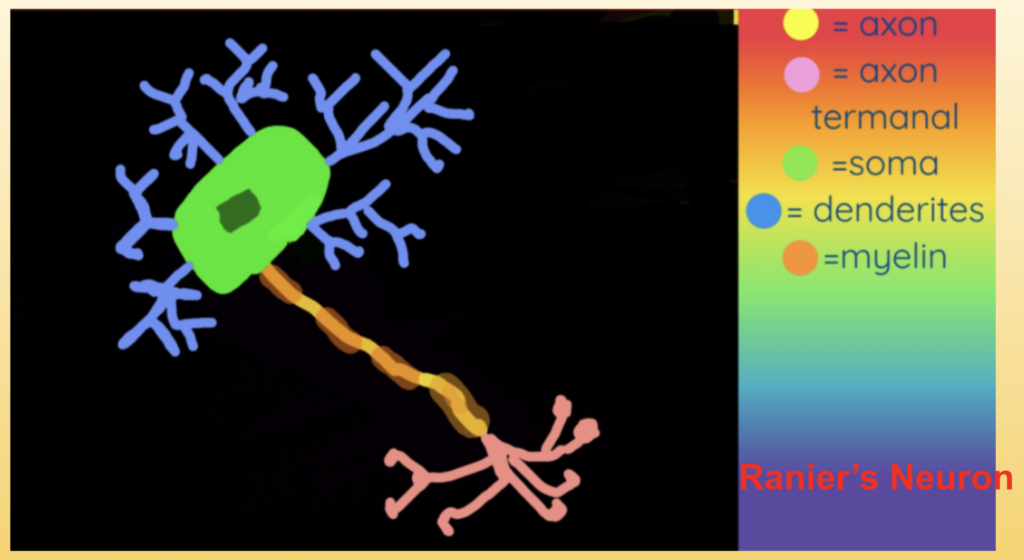
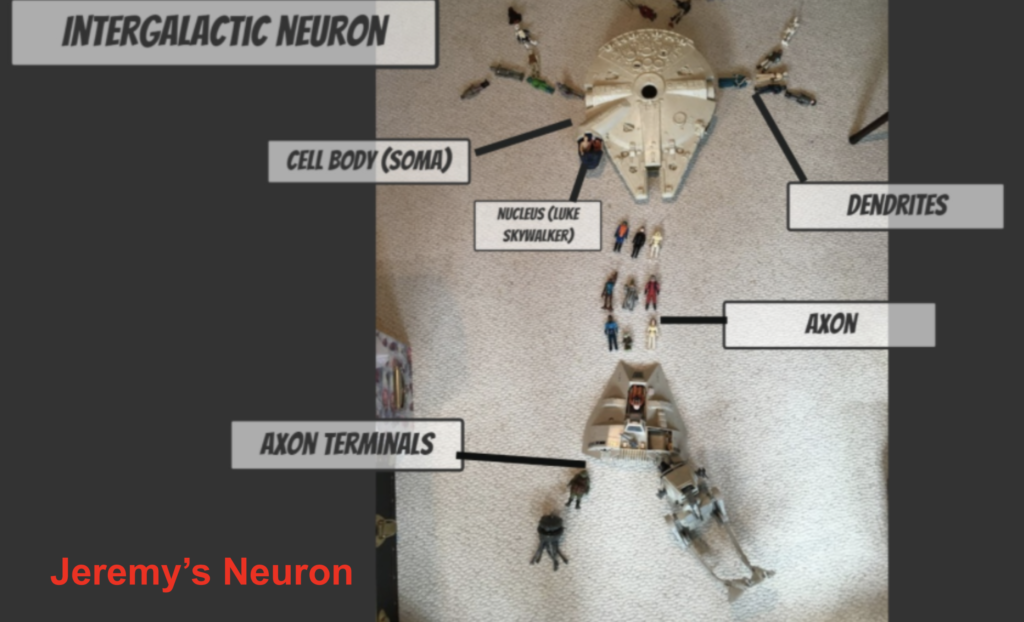
SEE MORE: Neurons in Minecraft & More!
Experiments and books!
We were VERY excited to introduce a special guest on our last day at school – Dr. Theanne Griffith, who is not only a celebrated neuroscientist studying temperature regulation, but also a beloved book author who has written about science for kids in 3rd and 4th grade!
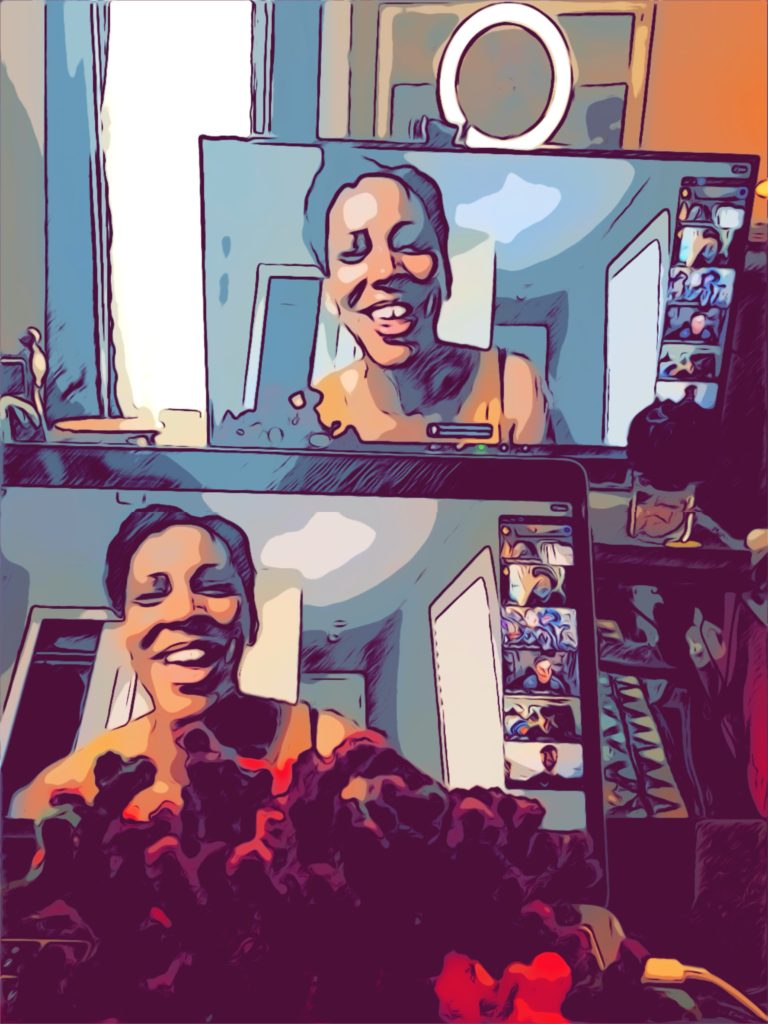
LEARN MORE: Dr. Theanne Griffith, UC Davis
LEARN MORE: Dr. Theanne Griffith, neuroscientist and author
LEARN MORE: Magnificent Makers
LEARN MORE: Dr. Griffith @ NOGGINFEST!
Dr. Griffith told us all about our peripheral nervous system (PNS), the neurons outside the brain and spinal cord (a.k.a., the central nervous system, or CNS) which carry sensory (or afferent) information in towards the brain, and also motor (or efferent) commands out to move your muscles.
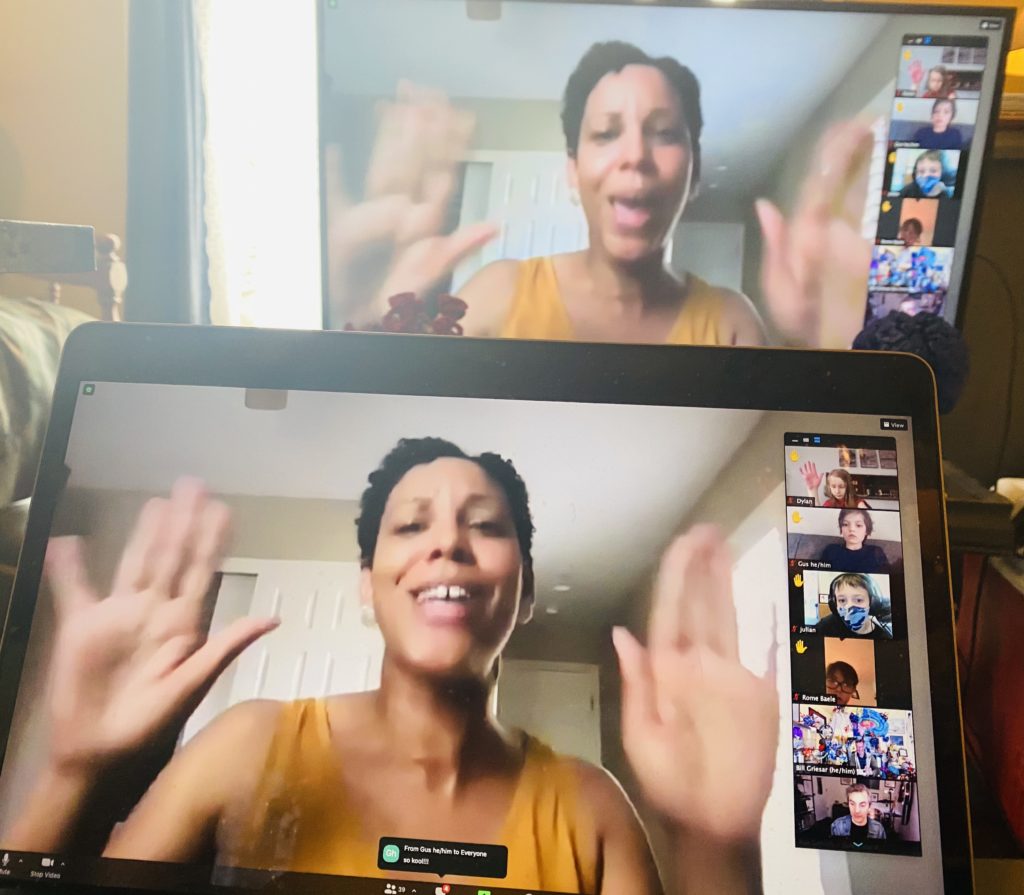
There are long, wire-like neurons in your PNS, which detect what’s happening in your body, and tell your brain if you’re hot or cold or injured, what you’re touching, where your arms are and, as Dr. Griffith told us, “when you have to pee really bad, or have eaten too much food!”
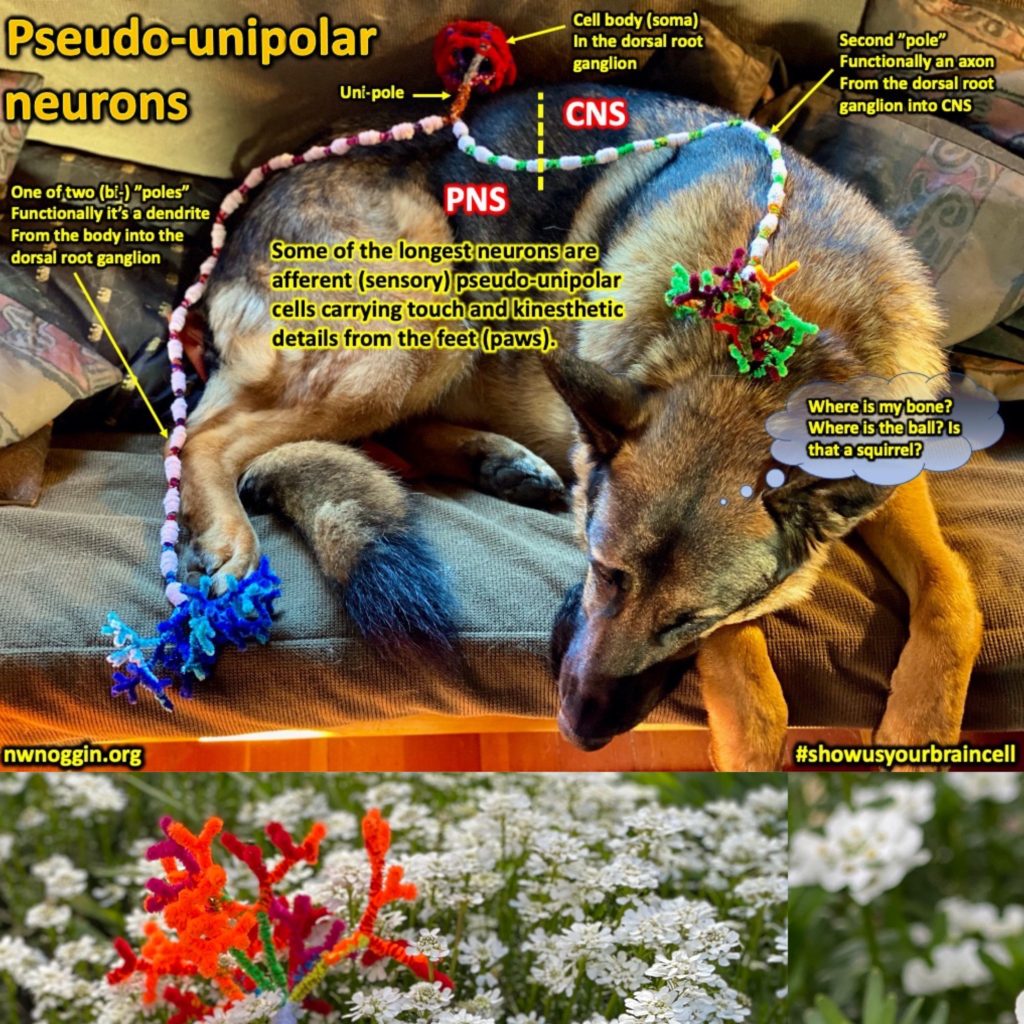
She also carried out a compelling and noisy experiment, getting sprinkles to bounce energetically on plastic wrap, representing our ear drum, as she hit a pot with a well-worn wooden spoon! Sunnyside teacher Asa followed up on his drums, getting one small sprinkle to respond to the sound waves through Zoom!
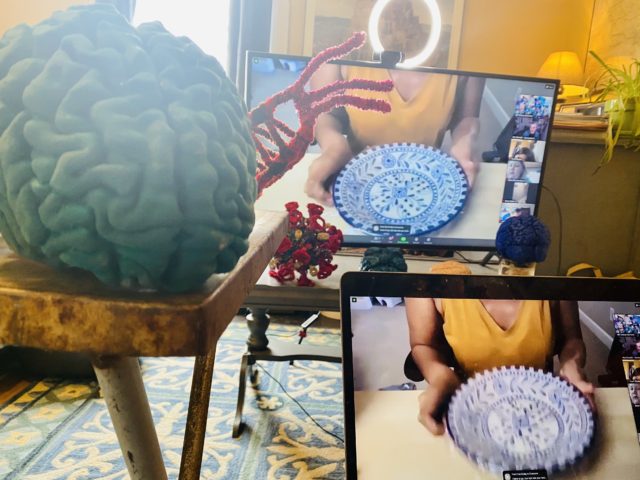
Sessions went way longer than expected at Sunnyside! Jeremy and Asa had asked their 4th graders what they already knew about brains, and what they’d like to know. Our sincere thanks to all these students. Their amazing, insightful questions are found below. ENJOY!
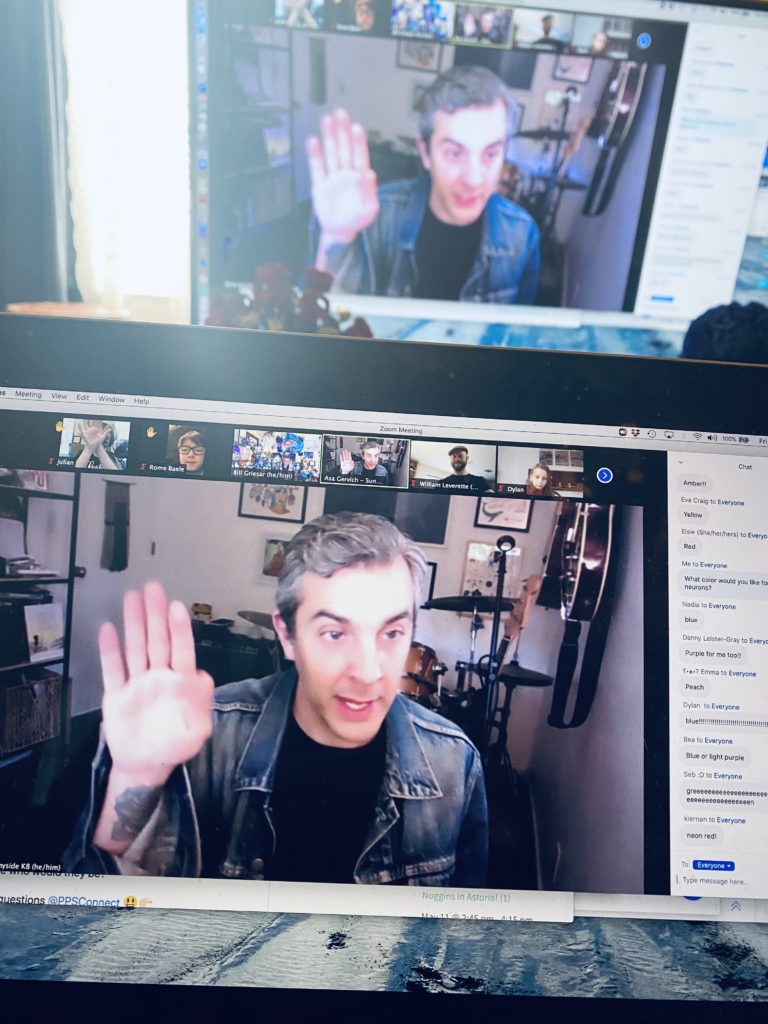
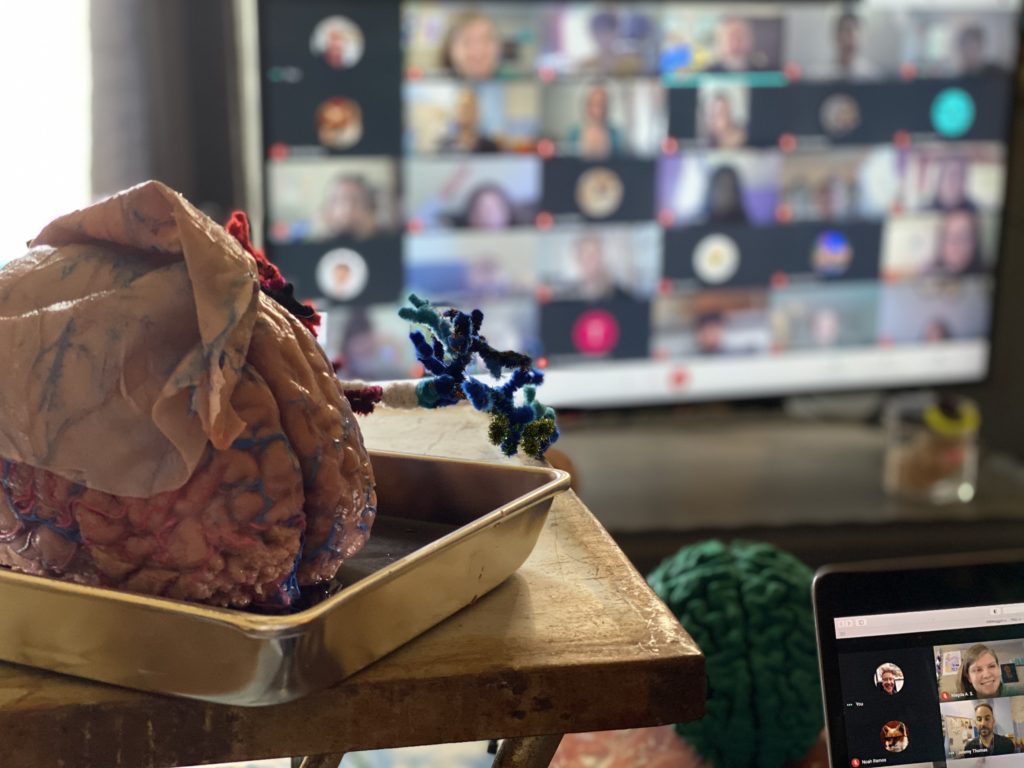
STUDENT QUESTIONS
I want to know about memories and dreams
How come sometimes you have control over your dreams, and other times you don’t? Why do our brains look like mush, yet they are so complicated?
What part of your brain is used the most? Why do humans have nightmares vs dreams sometimes? Is it because of something we’ve seen, or do they just happen?
How fast do you think it takes for people to process their dreams?
Why do we dream?
How do dreams work? What does it have to do with memories?

“Different sleep stages, suggested Dr. Stickgold, evolved to accomplish different tasks, several related to memory.“
LEARN MORE: Noggins in Nod: The science of sleep
I want to know about the thinking part of the brain
How big or small the laughter part of your brain is
“Why do I get more tired looking at screens than being outdoors? Why does looking at screens hurt my brain?”

How does the brain process what it wants to do, and how does it know whether it is a good thing to do
What are the different parts of the brain?
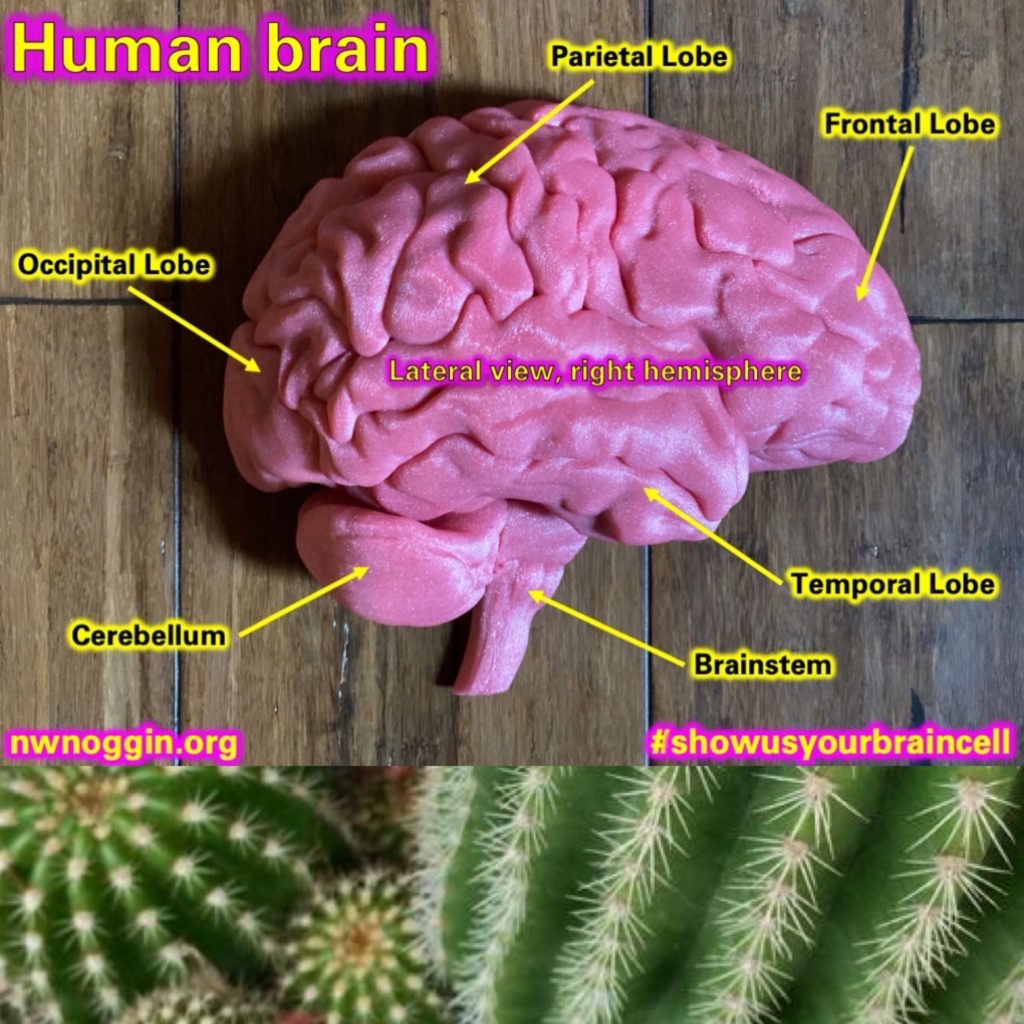
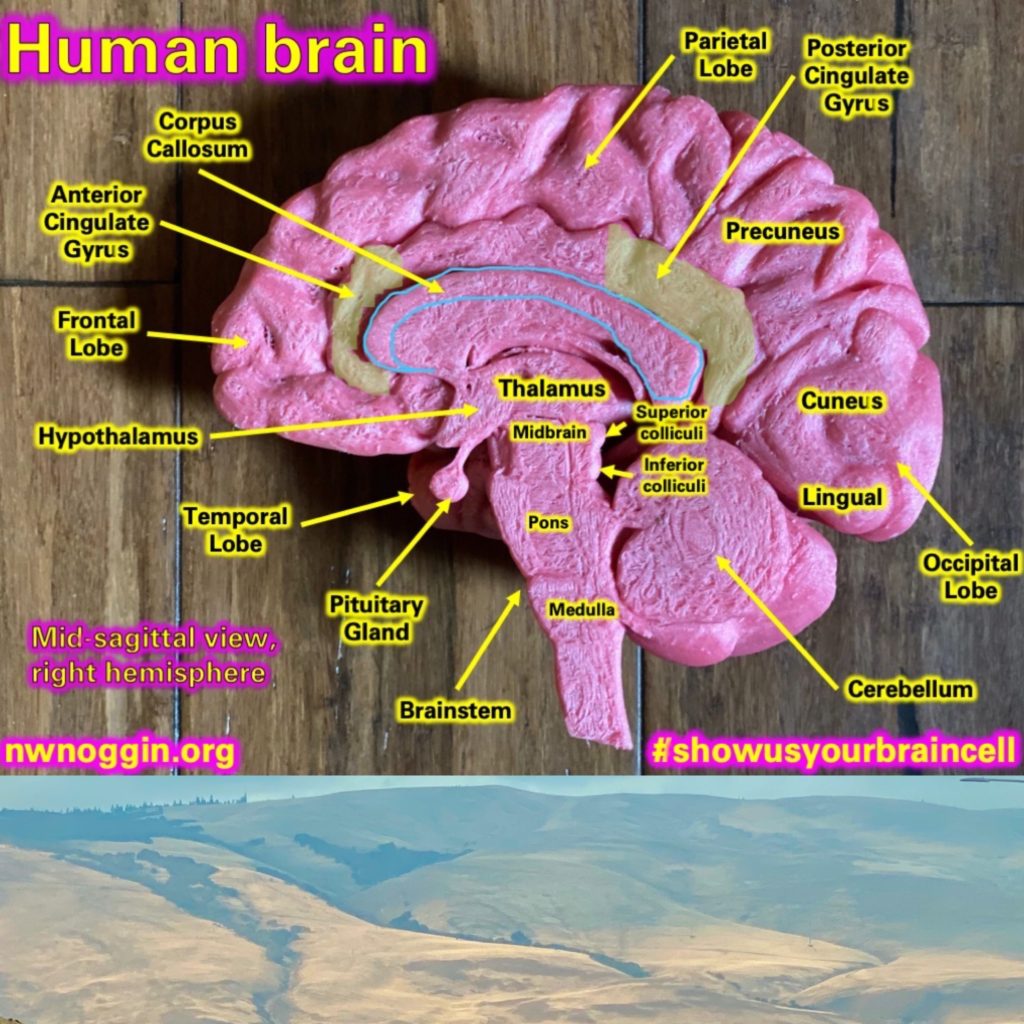
I am curious about memories and thoughts. How do we remember things? When you are learning something new, how exactly is your brain involved in the learning? HOW DO WE LEARN?
How do brains sense when the body gets hurt?
“Long specialized neurons stretch throughout our body carrying sensory information back to our CNS. When our skin is damaged, such as when we accidentally cut ourselves with a piece of paper, the skin cells burst open, spilling their protein contents out. These long specialized neurons (called nociceptors) can detect this damage to our skin by grabbing on to some proteins from the burst open skin cells. When they do this they get electrically active, sending currents to the spinal cord and brainstem (for a quick reflexive withdrawal from the source of injury, for orienting to the injury, and for waking up!) and brain (for feeling pain). This process happens incredibly fast, which is why when we hurt ourselves, the reaction can seem almost automatic. Touching a hot pan and quickly retracting your finger is an example of this process.”
– Alex Heinrich, undergraduate at Portland State University

LEARN MORE: A Tale (Tail?) of Two Neurons
How do the body and the brain communicate? How do the brain and our muscles, bones, etc.?
I am wondering about guilt – the feeling of feeling bad about something you’ve done; how is the brain involved in that?
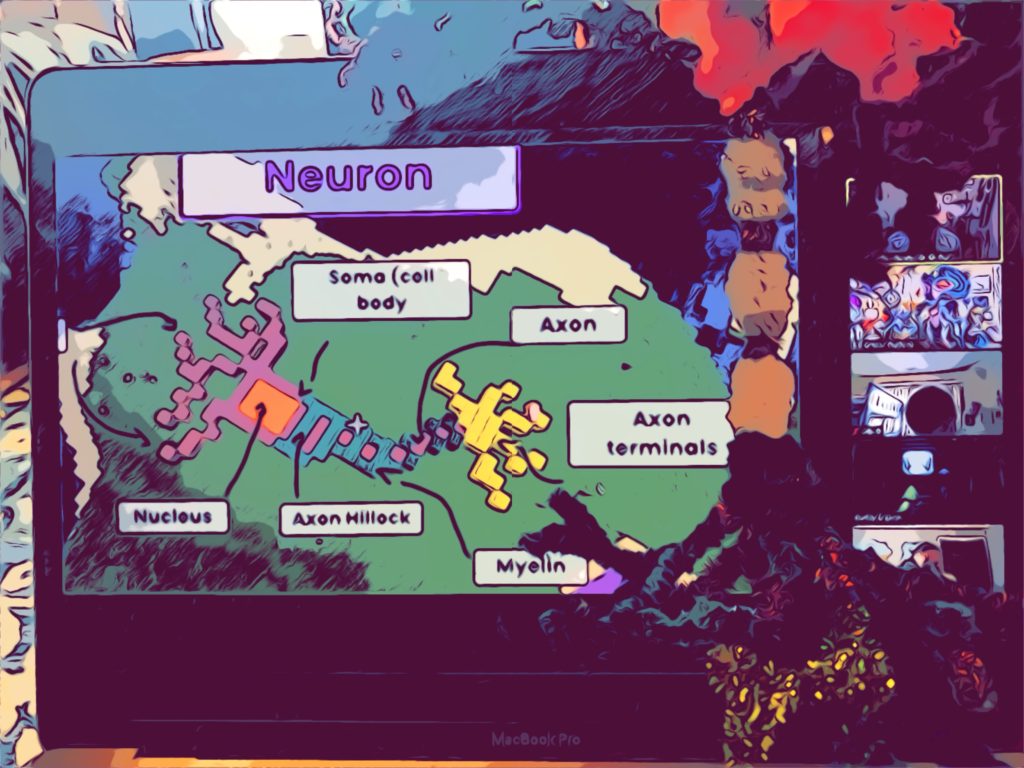
Why is our limbic system so “fast-acting”?
How many nerves are in our brains?

I want to know about all the nerves in the brain
How does the brain affect activities like running?
How does the brain know your likes, interests, etc.?

Do people with epilepsy (like me) have more dreams than people who don’t?
“These findings indicate that overall, dream recall (DR) occurs in medicated epilepsy patients with CPSs more frequently than reported in previous studies. The high DR frequency observed in these patients, regardless of the side of the epileptic focus, is in agreement with the assumption that tempoparietal areas of both hemispheres are involved in the production and recall of the dream experience.”
– Enrica Bonanni, Carlo Cipolli, Alfonso Iudice, Michela Mazzetti, Luigi Murri
LEARN MORE: Dream recall frequency in epilepsy patients with partial and generalized seizures
What do you know about helping kids with epilepsy and reading? I feel most of my seizures near my mouth and I wonder if different kinds of seizures happen in different parts of the brain.
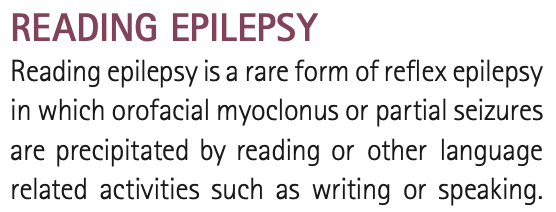
LEARN MORE: Reading epilepsy
LEARN MORE: The Epilepsies and Seizures: Hope Through Research
Why did you start studying the brain in the first place?
What is the strangest thing you’ve learned in your careers?
How many emotions can the brain help you make? How many neurons do you have?
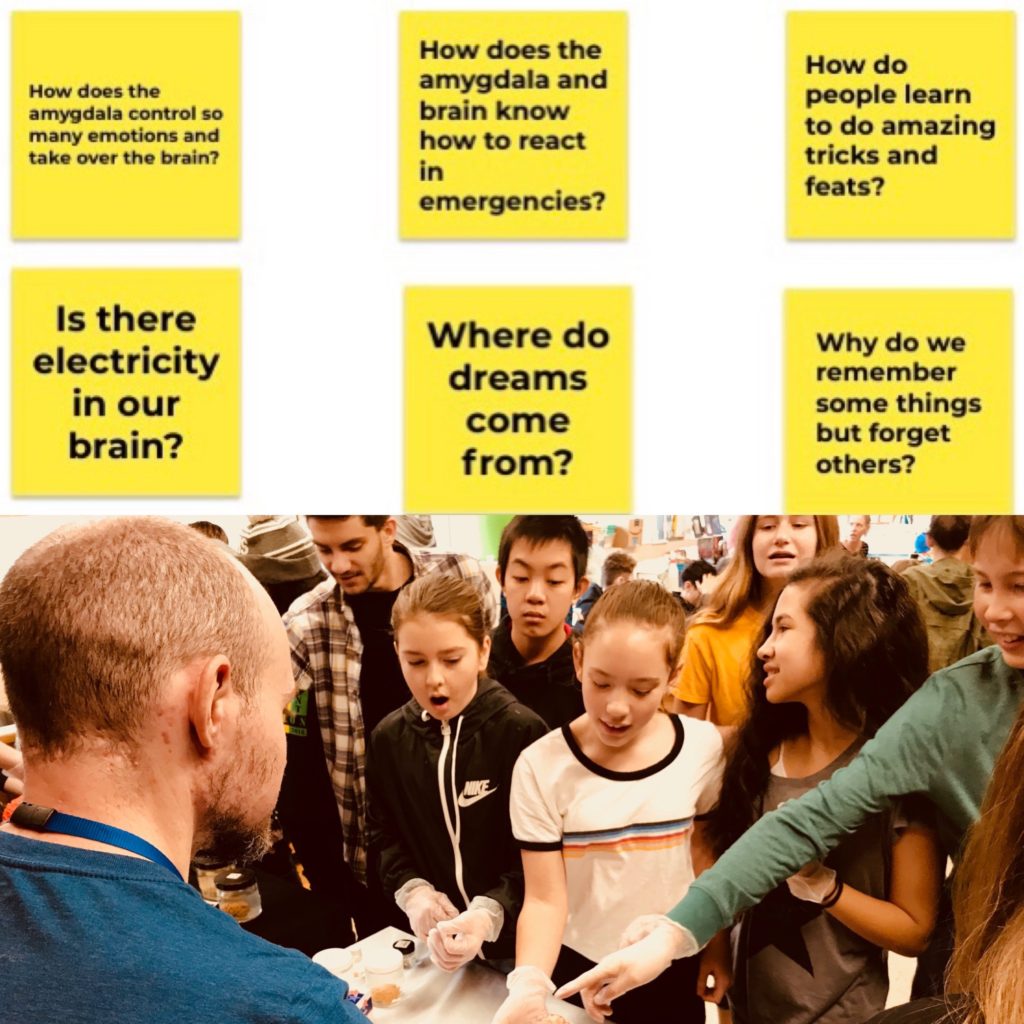
I just want to learn more about HOW the brain does its work.
What would my emotion be if I had two bad things happening at once? What is the first thing you ever learned about the brain?
Why are brains pink? Why do they have so many grooves in them?
“Brains are pink due to the oxygenated blood that runs through them, tinting them a light pinkish color on the surface. The grooves so common on the brain help increase the surface area of the grey matter by folding inwards. The grey matter of the brain is the outermost layer of the brain. It is most commonly associated with the more advanced abilities of the brain. This outer layer makes us most “human,” and as such, it is vital to have as much grey matter as possible, hence the grooves to create more space.”
– Alex Heinrich, undergraduate at Portland State University
If you’re asleep, do both halves of the brain go asleep? In the middle of the night, do the halves switch?
How big, exactly, is my brain?
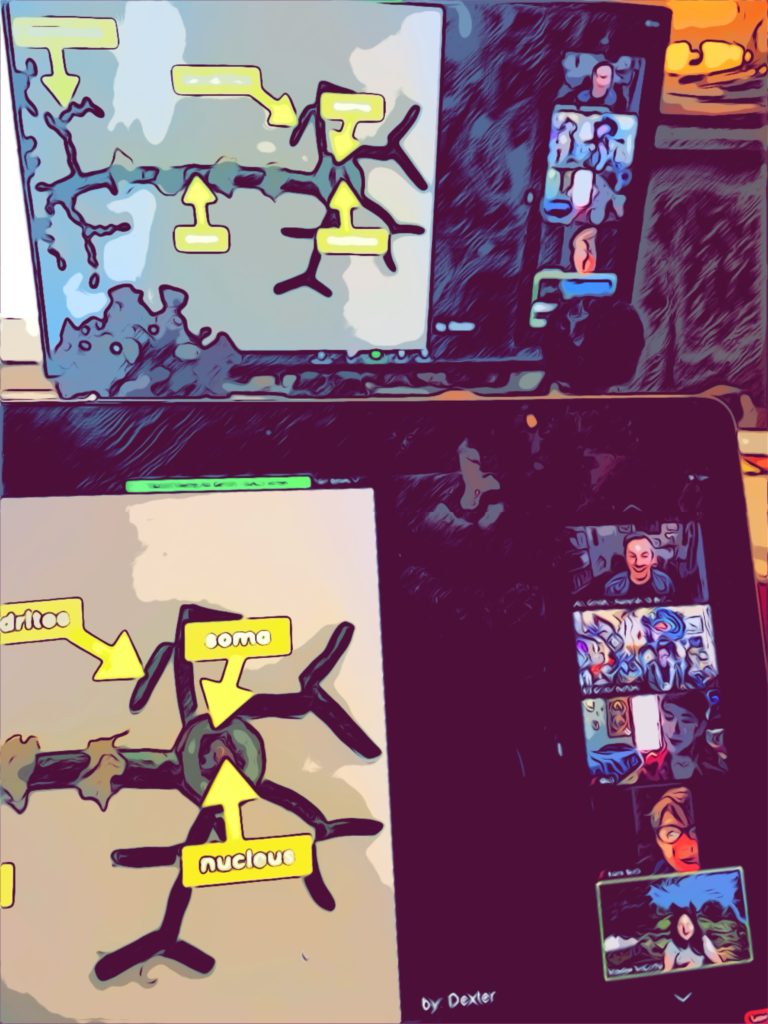
What happens to your brain when it gets bruised?
“When your brain gets bruised, the neurons and their connections get damaged. A hit to the head sends pressure waves through your brain, which is very soft, pulling and tugging at synapses. This damage makes it hard for neurons to communicate with each other. This communication breakdown can make it harder for you to remember things, stay balanced, and can even affect your personality. Just like a bruise on your knee, your brain will need time to heal and re-strengthen damaged connections.”
– Anna Traylor from Portland State University
LEARN MORE: NIH Traumatic Brain Injury Information Page
LEARN MORE: Traumatic Brain Injury: Hope Through Research
What happens to your brain, when it gets bruised? How does your brain decide if something tastes good?
Are all of our ideas a bunch of existing things, put together?
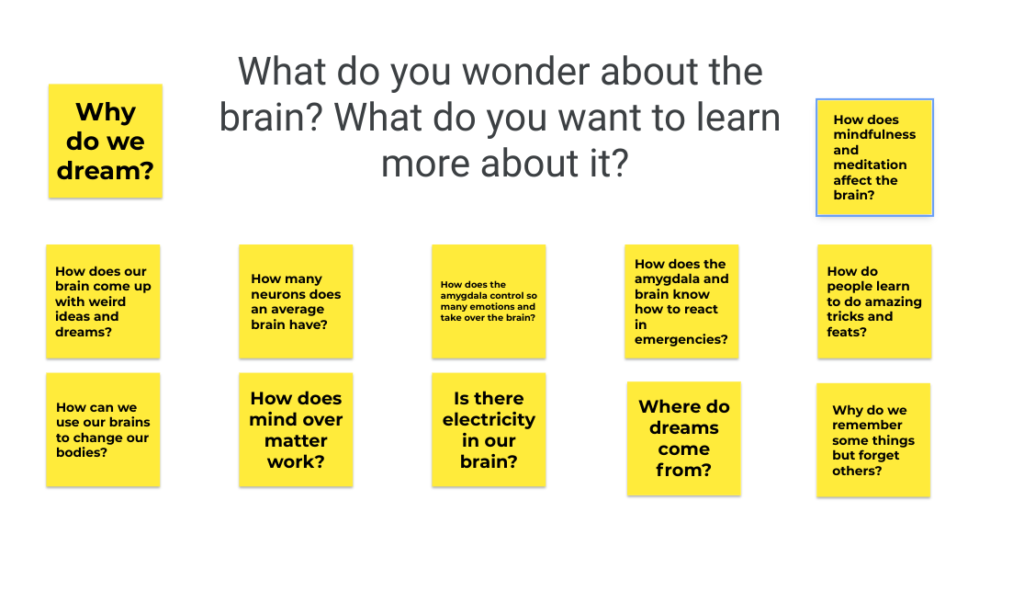
When we have dreams – what makes us dream about certain things in particular? Is it all memory-based?
How big is the prefrontal cortex?
I still don’t understand HOW a memory gets stored. Also, what decides if you like a certain taste or smell, or not?
How much can your whole brain process in a day? When or why does our brain go on “autopilot”? What is the most helpful part of the brain?
How much smarter is a human from a dinosaur? How does a brain develop intelligence?








